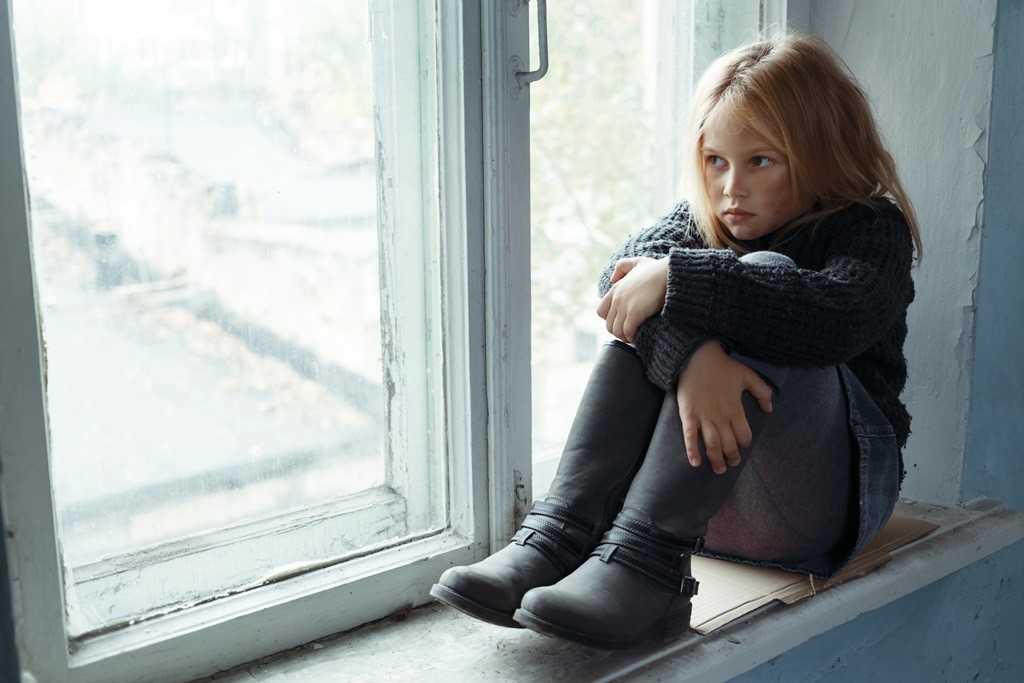The American Academy of Child and Adolescent Psychiatry (AACAP) estimates that as many as one in 20 children and adolescents suffers from childhood depression. And yet, it seems like it’s not often talked about. Perhaps this stems from the general misunderstanding or unfair judgment of mental disorders in society. However, untreated depression in children only worsens the problem, and it’s important for parents to pay attention to the warning signs…children may not understand what they’re feeling, and very few know to ask for help.
It’s scary to consider that your child might be suffering from something like depression…adults who have been depressed know how overwhelming it is, and to consider your child experiencing that is nauseating. Dr. Fassler, of the AACAP reassures, “Depression is no more a result of ‘bad parenting’ than is diabetes or cancer. All are real illnesses that require careful evaluation. The good news is that we can help most children and adolescents.” Okay! Phew. Good parents can have depressed children, and good parents should be vigilant in looking out for warning signs.
Yes. Childhood depression is different from the normal “blues” and everyday emotions that occur as a child develops. Just because a child seems sad doesn’t necessarily mean he or she has significant depression. If the sadness becomes persistent, or if disruptive behavior that interferes with normal social activities, interests, schoolwork, or family life develops, it may indicate that he or she has a depressive illness. Keep in mind that while depression is a serious illness, it is also a treatable one.
First, arm yourself with facts. Here are some helpful statistics: 25% of children who have had a parent suffer from clinical depression will experience their own episode. If both parents have, this goes up to 75%. While it’s not guaranteed, parents who have a personal history of depression may want to be open with their child about their own experiences, to help them better identify bad feelings early on. Also, about 40% of children with depression also have an anxiety disorder, and one in four has ADHD.
Once you’ve done your research, there are a number of things to keep an eye on. It’s important to recognize that, even if you’ve had personal experience with depression, it might look different in children. A number of adults whose children have been diagnosed with clinical depression report that the first sign of something being “off” was not that their child became sad or withdrawn, but was instead persistently and uncharacteristically irritable.
Signs of depression in children may include:
- Irritated
- Feeling sad or hopelessness
- Lack of social involvement
- Sensitive to being rejected
- Change in appetite
- Change in sleep patterns
- Crying or Screaming
- Lack of concentration
- Fatigue
- Complaints such as stomachaches, headaches etc
- Little engagement at functions with family or friends
- Feeling of helplessness
- Weakened concentration
- Thoughts of death or suicide
Other things to keep an eye on are changes in weight, sleep patterns, social behavior and schoolwork. While none of these things are a definitive diagnosis (nothing is, except an assessment from a medical professional), changes that persist for two weeks or longer should be addressed with the pediatrician.
One of the best things a parent can do to preemptively address depression is to normalize the concept of therapy, and open, honest communication. Treating the concept of mental illness the same way you treat other illnesses could be hugely beneficial if your child does begin to feel troubled. Hopefully, they will know to tell you that something feels wrong, the same way they do if they have a stomachache or a headache.
